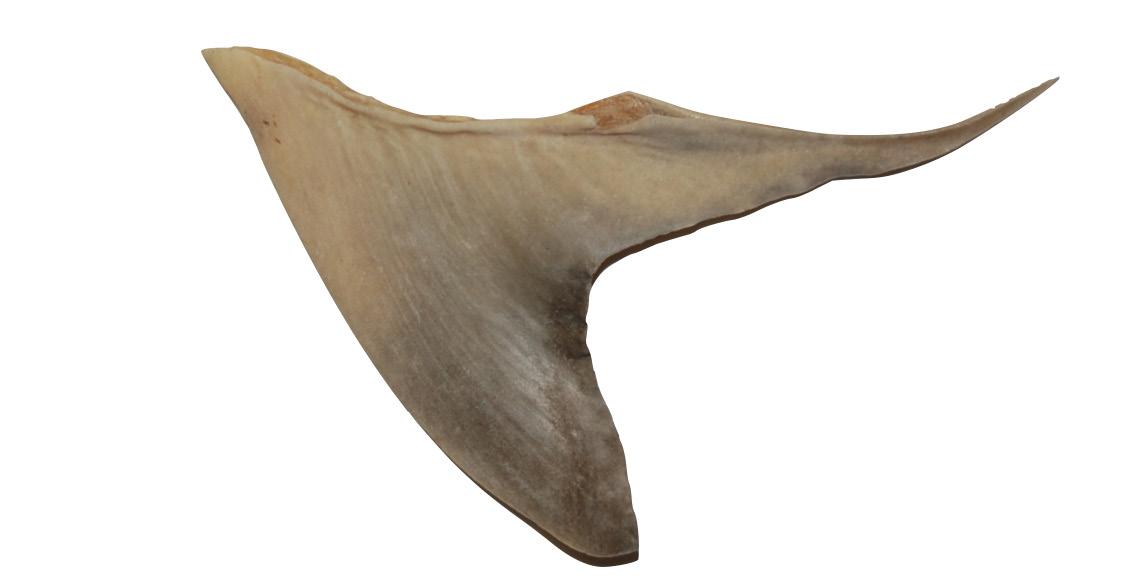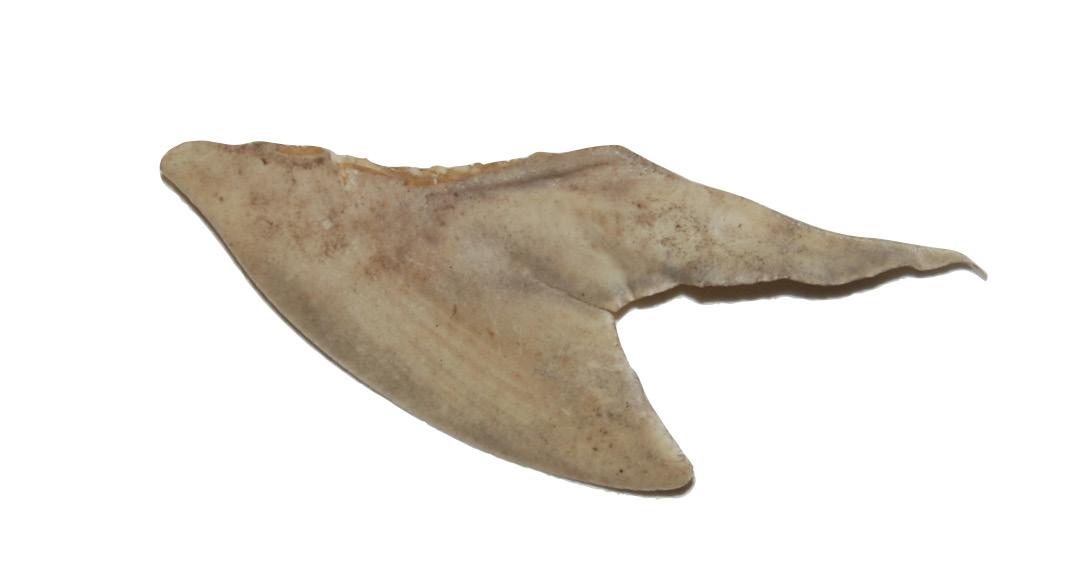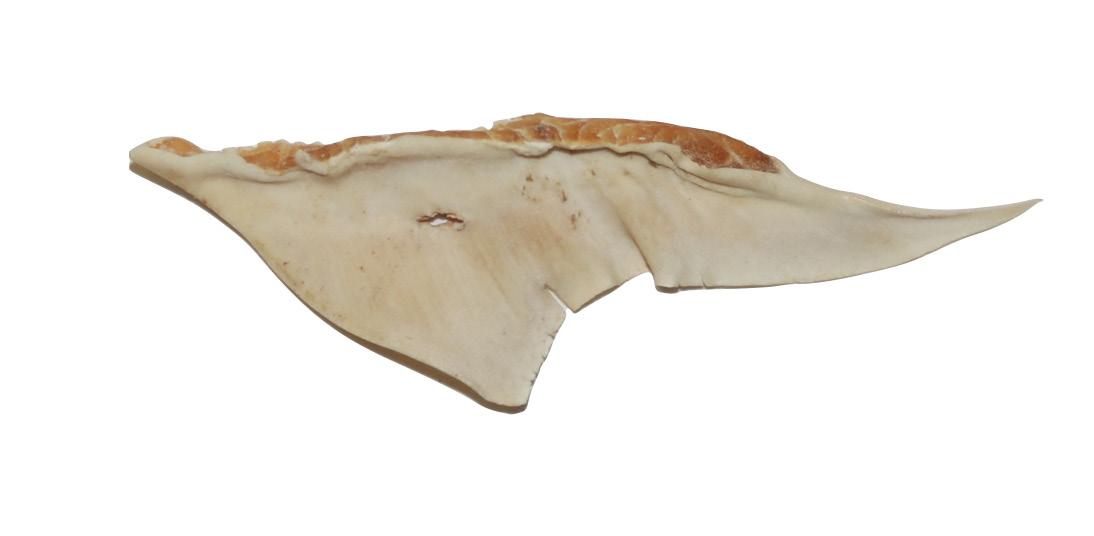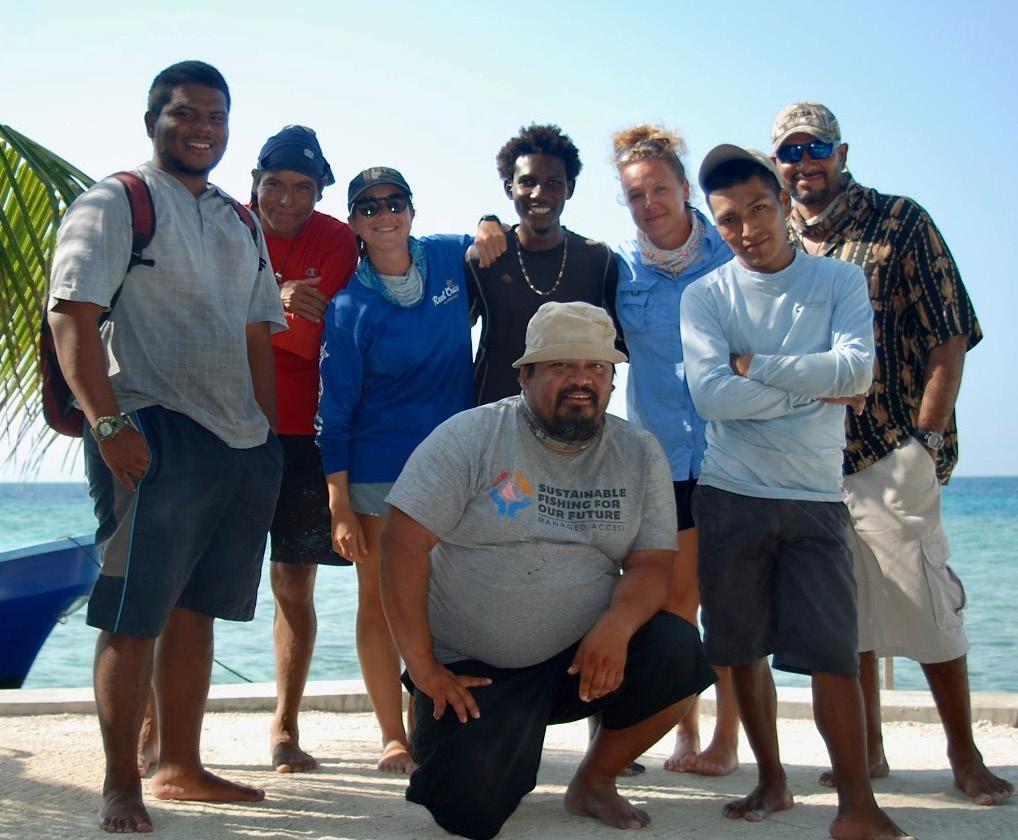
8 minute read
Trading fins for conservation
Trading fins for conservation: a new approach for obtaining species and size-specific landings data.
Demian D. Chapman
Advertisement
IUCN SSC Shark Specialist Group | North America Regional Group | Member Mote Marine Laboratory & Aquarium, Sarasota, Florida, USA Florida International University, North Miami, Florida, USA
Beverly Wade
Ministry of Blue Economy & Civil Aviation, Belize City, Belize Region Update: North America
America. Though every nation will present different challenges, we think that this approach or variations of it could be useful in many shark fishing nations. They say that progress is 1% inspiration and 99% perspiration, and so it was for this approach, which was developed over a period of over a decade.
Demian: The idea for anal fin sampling came to me at Turneffe atoll, Belize, right before Christmas in 2008. I was there conducting a shark survey, and while soaking a longline in the northeast corner of the reef, the captain pointed out a small fishing camp on one of the nearby cayes. We drove over to say hello to the fishers, who looked like they were finished for the day. A small wooden cabin was nestled on stilts among the mangroves, and a small pack of dogs greeted us on the makeshift dock. The buzzing of flies and aroma of sharks told us the fishers had a good night, and the leader was happy to show us a pile of shark carcasses. He told us a little bit about the sharks he caught and was obviously knowledgeable about the species and their habits. I thought it would be great to sample their catch over time, which he indicated came in fits and spurts and would require frequent visits to document appropriately. Looking down at the headless, tailless and mostly finless dressed shark carcasses, I noticed that the pelvic and anal fins remained attached to the trunk. “They don’t buy those fins,” the fisher told me, “So I leave them on”. Looking at the pile,
Jessica R. Quinlan
Florida International University, North Miami, Florida, USA
Some of the unsung heroes of shark conservation are the people who go out and sample landings. It’s dirty, uncomfortable work that doesn’t lend itself well to social media posts. It can be costly and challenging to fund. But data on the species and size composition of landings are the grease in the wheels for management.
One limitation of sampling landings is that researchers can’t be everywhere at once. Given funding and time limitations, landings site visits are likely to be infrequent and may therefore contain hidden biases. Getting the fisherfolk themselves to collect species and size data makes more sense since they bring in the animals. But fishing is arduous, and adding onerous reporting requirements is not always a viable option.
Our team, consisting of researchers, fishers, and resource managers, has come up with a new approach for collecting species and size-specific catch data from sharks in Belize, Central

Anal fins of Caribbean Reef (Carcharhinus perezi), Blacktip Reef (Carcharhinus melanopterus), Caribbean Sharpnose (Rhizoprionodon porosus) and Bonnethead (Sphyrna tiburo) Sharks (clockwise from top left)



I realized that the anal fins were quite variable in morphology and colour. That was the genesis of anal fin sampling. I offered the fisher $1 for every anal fin if he simply dried them in the sun like the main fins that he was selling for the export market. “I’ll come back next year, just put them in a bag, and I will collect them then”. And so it went, for the next four years, we met up, and I had a record of the camp’s landings for the previous year. Working with various collaborators, my students and I used DNA barcoding to identify every anal fin to the species level. Over 80% were Caribbean Reef (Carcharhinus perezi) and Caribbean Sharpnose Sharks (Rhizopriondon porosus). We quickly realized that many of the anal fins were distinctive and could often correctly predict the species-of-origin before the DNA results were in.
In 2012, I had a meeting at the Belize Department of Fisheries with Beverly Wade, Fisheries Administrator. Among the other data I was showing, I provided the species composition of the landings of the Turneffe camp.
Beverly: When Demian showed me the data from Turneffe, I was excited because these data are exactly what was needed for us to manage our shark fishery better. We knew there was a small-scale fishery in Belize, and we had recently prohibited landings of two major tourism species (Nurse [Ginglymostoma cirratum] and Whale [Rhincodon typus] Sharks). We had also implemented a licensing system for shark fishing in which all shark fishers had to obtain a license each year to participate in the fishery. But we still desperately needed systematically collected landings data on the remaining species to determine what types of other regulations we might need to maintain the fishery. I suggested to Demian that we request that all shark fishers submit anal fins of the previous year’s catch to obtain the following year’s license. After a couple of “teething” years where people forgot, sampled the wrong fins, lost fins, or had their pets chew them up, we started getting hundreds of anal fins each year from all of the major shark fishing communities along the Belizean coast. cept of the anal fin monitoring project as Demian explained the idea to me. He went over the distinguishing characters he had come to know as I fervently took notes, worried about missing an important detail. He had recently come back from a trip to Belize and said, “Good news, I’ve brought back the anal fins from this past year’s fishing season for you to get started on”. I couldn’t wait. Then he plopped down an oversized duffel bag, almost overflowing with hundreds of anal fins. So there I was, in a small, very stinky room with what felt like fins up to my eyebrows. Slowly, as I began to look at each fin individually, I noticed these subtle differences that eventually became glaringly obvious distinguishing features for each species. My sense of being overwhelmed dissipated and was replaced with an eagerness to streamline this idea and make it more accessible and user friendly. Among other things, I developed a visual guide for the fins that the fisheries staff and others in the Caribbean could use (conbio.onlinelibrary.wiley.com/ action/downloadSupplement?doi=10.1111%2Fcobi.13688&file=cobi13688-sup-0003-SuppMat.pdf)
Knowing what species were landed and how many of each, we were hopeful that the anal fins could also be used to determine the size (length) of the animals from which the fins came. To do this, we had to better understand the relationship between the length of the anal fin and the animal’s length by collecting these paired measurements from whole sharks. This meant spending time in another stinky place: a shark fishing camp in Belize. A short plane ride and one very bumpy, five-hour boat ride down the coast, I arrived at a shark fishing camp accompanied by Belize Fisheries Department staff. I had no idea what to expect or how I’d be received. We quickly settled in and, after setting up camp, we were anxious to see what the nights’ fishing would yield the following morning.
The scent of coffee, sounds of breakfast preparations, and the hum of motors from returning dugouts served as our alarm clock: it was time to start the day. As the fishers cleaned their catch, we stood ankle-deep in crimson-tinted water around a makeshift table where we created an assembly line to collect measurements and remove anal fins. While the rest of the camp joined as onlookers, inspecting the process over breakfast, we
shared laughs, and each explained how we did our respective work and why. It wasn’t long before fishers joined us in recording data, learning how to take length measurements. This was the first of many trips to fishing camps where we got the opportunity to meet different members of the shark fishing community throughout central and southern Belize. The data collected during these visits gave us the key to unlocking the duffle bag of fins’ full potential at the university. We were able to fully reconstruct the previous fishing season in terms of species composition and, for the most common species, their sizes as well. The paired measurements enabled us to plot relationships between anal fins size and body size for the most frequently caught sharks, allowing us to regress size-specific data for the Belizean shark fishery from fins alone. Among other findings, we worryingly observed that most Caribbean Reef Sharks were below the size at maturity. Other students in our research group had independently found signs of Caribbean Reef Shark overexploitation in Belize, and this information was passed on to the stakeholders.
Demian: Our work was recently published in the journal Conservation Biology (conbio.onlinelibrary.wiley.com/doi/abs/10.1111/ cobi.13688) and has helped guide management decisions in Belize, including the establishment of closed areas to better protect shark populations, especially Caribbean Reef Sharks, around the atolls. The fishing community fully supported this management decision, and we now hire them to monitor sharks to offset the income had they kept fishing these places.
Jess: We continue to monitor the Belize shark fishery through the anal fins program, and we are collecting paired measurements from the less common species in the fishery so that we can size them as well. Most importantly, we continue to foster and grow our respectful relationships with shark fishers and resource managers as we cooperatively work towards their goal of having a sustainable small-scale shark fishery. We are hopeful that the science we are co-producing can help Belize and help guide other nations in the region, possibly throughout the world, to tackle this essential first step towards managing shark fisheries for sustainability.











